Astrodene’s Historic Naval Fiction Log Book, a monthly newsletter on naval and nautical fiction and non-fiction is out for April. Books due for release this month are the novels, The Mountain of Gold by J. D. Davies, and Honor Bound by Robert N. Macomber, as well as non-fiction by Wynford Davies, HMS Warrior – Ironclad . To read more, click here.

Times have been tough for Horizon Lines, the US Jones Act container shipping company that was spun off from Sealand in 2003. In addition to suffering decreased revenues in the general economic downturn, in late February Horizon agreed to plead guilty to a felony charge of price-fixing and will pay a $45 million fine. It also is facing a class action suit expected to be settled for roughly $20 million. It is currently at risk of default on $330 million worth of convertible bonds and is reported to be considering filing for bankruptcy in April.
Horizon Lines Said to Weigh April Bankruptcy as Convertible Bonds Plummet
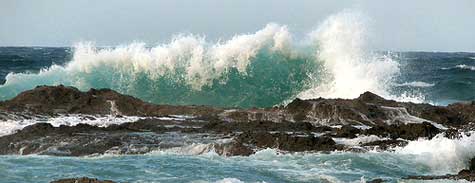
Does the wind seem to blowing harder and the waves growing ever higher? Perhaps they are after all. A new study finds that wind speeds and wave heights have been rising significantly over the last two decades.
Study finds oceanic wind speed and wave height increasing
Oceanic wind speeds and wave heights have increased significantly over the last quarter of a century according to a major new study undertaken by ANU Vice-Chancellor Professor Ian Young. Published in Science, the study is the most comprehensive of its kind ever undertaken. Other authors include Swinburne University oceanographers Professor Alex Babanin and Dr Stefan Zieger.
Continue reading
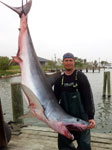 Last summer we posted about a breaching Southern Right whale that landed on a sailboat off South Africa. This week, boaters off the Florida Keys and in the Gulf of Mexico off Texas got surprise visitors.
Last summer we posted about a breaching Southern Right whale that landed on a sailboat off South Africa. This week, boaters off the Florida Keys and in the Gulf of Mexico off Texas got surprise visitors.
Off the Florida Keys a 200 pound spotted eagle ray jumped into chartered boat and landed on top of Jenny Hausch, knocking her down. Ms. Hausch was able to crawl out from under the ray and was unhurt. The ray was helped back into the water and swam away.
Florida Keys tourist survives collision with jumping sea creature
Continue reading
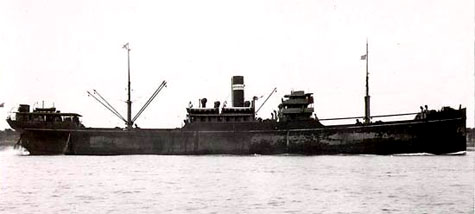
On February 16, 1941 the S.S. Gairsoppa was bound from India to Britain, when she was torpedoed by a German submarine and sank 300 miles southwest of Galway Bay. In addition to pig iron and tea, she carried silver bullion currently valued at $260 million. This week, Odyssey Marine Exploration , Inc. has been awarded a contract by the British government to locate the ship and to salvage the cargo. If successful Odyssey will be allowed to keep about 80 percent of the silver bullion.
Odyssey Hunts Nazi-Torpedoed Ship’s $260 Million of Silver
Continue reading
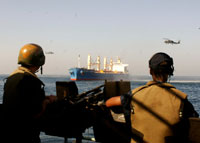 Recently we posted about joint-operations by the Indian Navy and Coast Guard which since last Novemeber have succeeded in capturing 120 pirates in the Indian Ocean as well as taking several pirate “mother ships” and freeing the hostage held aboard. On reader commented: Good on the Indian Navy. (Would we have done the same?)
Recently we posted about joint-operations by the Indian Navy and Coast Guard which since last Novemeber have succeeded in capturing 120 pirates in the Indian Ocean as well as taking several pirate “mother ships” and freeing the hostage held aboard. On reader commented: Good on the Indian Navy. (Would we have done the same?)
In most cases the answer would be “no.” A recent operation by the US Navy against Somali pirates demonstrates the difference in approach and outcome.
Continue reading
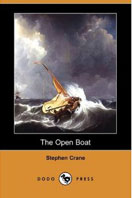 None of them knew the color of the sky. Their eyes glanced level, and were fastened upon the waves that swept toward them. These waves were of the hue of slate, save for the tops, which were of foaming white, and all of the men knew the colors of the sea. The horizon narrowed and widened, and dipped and rose, and at all times its edge was jagged with waves that seemed thrust up in points like rocks ……
None of them knew the color of the sky. Their eyes glanced level, and were fastened upon the waves that swept toward them. These waves were of the hue of slate, save for the tops, which were of foaming white, and all of the men knew the colors of the sea. The horizon narrowed and widened, and dipped and rose, and at all times its edge was jagged with waves that seemed thrust up in points like rocks ……
Thus begins Stephen Crane’s classic short story, ‘The Open Boat.’ The story is almost as much fact as fiction. While running guns to revolutionaries in Cuba, the SS Commodore sank after hitting a sandbar off Ponce Inlet, Florida. Crane, part of the filibustering expedition, found himself in a small open boat with three other men for 36 hours in high seas.
Continue reading
 Last week, while searching near the the wreck of Nuestra Senora de Atocha, Bill Burt, a diver for Mel Fisher’s Treasures, found a 17th century gold chain worth $250,000.
Last week, while searching near the the wreck of Nuestra Senora de Atocha, Bill Burt, a diver for Mel Fisher’s Treasures, found a 17th century gold chain worth $250,000.
Deep sea treasure: 17th century gold chain worth $250,000 plucked from ocean bed near Atocha wreck
Continue reading

USS Chesapeake, from frigate to mill
Last Sunday, we posted about the authorization for the construction of the first six frigates for the US Navy in 1794. The folks at Maritime Great Britain were kind enough to pass along two related stories.
Continue reading

Indian Coast Guard ship Sangram
On Sunday the MV Maersk Kensington reported an attempted boarding by pirates while underway off the southern coast of India. The Indian navy ship Suvarna and Coast Guard ship Sangram responded, intercepting the Iranian fishing trawler Morteza which had been hijacked and was being used as a pirate mother ship. After a three hour running battle, the Indian forces captured 16 pirates and freed 16 hostages, 12 Iranians and 4 Pakistanis.
Continue reading

Mystic Seaport is featuring a traveling exhibit from Philadelphia’s Independence Seaport Museum – Skin & Bones, Tattoos in the Life of an American Sailor. The exhibition runs through September 5, 2011.
Skin and Bones – Tattoos in the Life of the American Sailor
Continue reading
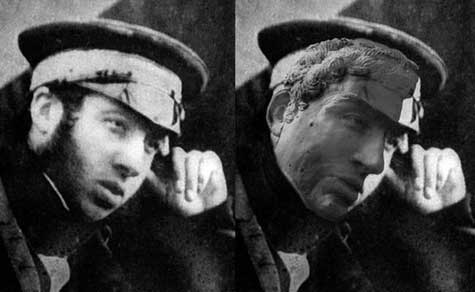
New facial reconstruction technology applied to the skull of one of the members of the ill-fated Franklin expedition may rewrite accepted history. The skeleton long believed to be that of Henry Le Vesconte, a lieutenant aboard HMS Erebus, is now believed to be that of Harry Goodsir, an assistant surgeon and naturalist on the expedition.
New Identity for Arctic Explorer Emerges 140 Years Later
Continue reading
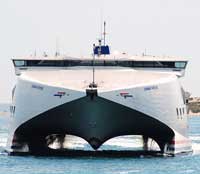
Photo: Gordon James
The 86m fast catamaran ferry, Condor Vitesse, collided with a fishing vessel this morning, seriously injuring a French fisherman.
UPDATE: The fisherman injured in the crash subsequently died.
French fisherman seriously injured in ferry crash
The Condor Vitesse, travelling between St Malo in France and St Helier, Jersey, collided with the boat at about 0750 BST on Monday. There were three French nationals on the fishing boat. Two of them were taken to the Vitesse. It is thought the fisherman is in a serious condition.
Continue reading
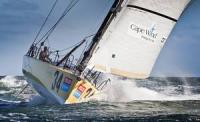 The fourth leg of the Velux Five Oceans Singlehanded Round the World Race is underway as the four competitors set off from Punta del Este, Uruguay bound for Charleston, South Carolina. The racers are currently sailing at north at around ten knots all within 3 nautical miles of each other. Brad Van Liew, the American sailing Le Pingouin, the winner of the last three legs, is again in the lead, but separated from two of the competitors by only one nautical mile.
The fourth leg of the Velux Five Oceans Singlehanded Round the World Race is underway as the four competitors set off from Punta del Este, Uruguay bound for Charleston, South Carolina. The racers are currently sailing at north at around ten knots all within 3 nautical miles of each other. Brad Van Liew, the American sailing Le Pingouin, the winner of the last three legs, is again in the lead, but separated from two of the competitors by only one nautical mile.
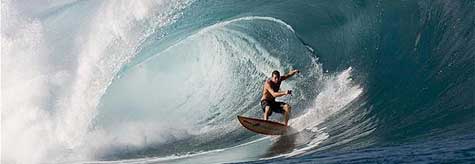
No one needs to be reminded that the sea is a dangerous place, and nowhere more so than where it meets the shore. Sion Milosky, one of the world’s great big wave riders, died last week at 35 while surfing off the California coast.
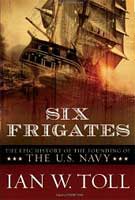 Two hundred and seventeen years ago today, March 27, 1794, the United States Congress authorized the construction of six frigates, the first ships of the United States Navy, the USS Constitution, the USS Chesapeake , the USS Constellation , the USS President, the USS United States, and the USS Congress. The ships were designed to be heavy frigates – longer and faster than the conventional frigates of their day, able to stand and fight against any ships their size and fast enough to evade larger ships of the line. Innovative structural design involving diagonal bracing allowed US shipbuilders to build longer and faster frigates than was previously thought practical. The ships more than held their own against the Royall Navy. The six frigates were also significantly over budget and delivered later than anticipated, a tradition proudly upheld in military contracting to this day.
Two hundred and seventeen years ago today, March 27, 1794, the United States Congress authorized the construction of six frigates, the first ships of the United States Navy, the USS Constitution, the USS Chesapeake , the USS Constellation , the USS President, the USS United States, and the USS Congress. The ships were designed to be heavy frigates – longer and faster than the conventional frigates of their day, able to stand and fight against any ships their size and fast enough to evade larger ships of the line. Innovative structural design involving diagonal bracing allowed US shipbuilders to build longer and faster frigates than was previously thought practical. The ships more than held their own against the Royall Navy. The six frigates were also significantly over budget and delivered later than anticipated, a tradition proudly upheld in military contracting to this day.
Continue reading
 Every US naval ship and most American merchant ships carry aboard a copy of the American Practical Navigator, which most refer to simply as Bowditch, after Nathaniel Bowditch, the author of the first edition in 1802. On March 26, 1773, Nathaniel Bowditch, the fifth of seven children, was born in Salem, Massachusetts, to a seafaring family of limited means. Apprenticed as a bookkeeper, he was a self taught mathematician with a particular interest in navigation.
Every US naval ship and most American merchant ships carry aboard a copy of the American Practical Navigator, which most refer to simply as Bowditch, after Nathaniel Bowditch, the author of the first edition in 1802. On March 26, 1773, Nathaniel Bowditch, the fifth of seven children, was born in Salem, Massachusetts, to a seafaring family of limited means. Apprenticed as a bookkeeper, he was a self taught mathematician with a particular interest in navigation.
Bowditch had the radical notion that navigation could be made simple enough so that everyone aboard the ship, including the cook, could be taught to navigate.
Continue reading
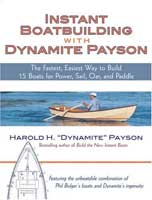 Harold ‘Dynamite’ Payson died suddenly of an an aneurysm at his home in Maine on March 23rd. He was 82.
Harold ‘Dynamite’ Payson died suddenly of an an aneurysm at his home in Maine on March 23rd. He was 82.
His message was simple. As expressed in his books and on his webpage,” Harold H. Payson … known to associates, friends, and his wife as Dynamite… thinks you can build a boat. In fact, if you can saw a penciled line, apply glue, drive nails, and bring a modest measure of patience to the task, you can build and launch a smart and able craft in as few as 40 work hours. You need not be driven by lack of tools, materials, skills, or time to abandon in frustration a project you conceived in a spirit of pleasurable anticipation.”
Continue reading
This is an amazing presentation from a website called “everybody loves cephalopods.” (I know that I do, usually lightly fried.) I have to admit that after watching this excerpt from a 30 minute presentation by Maggie Koerth-Baker that I am indeed fascinated by octopus brains. Definitely worth a look.
[iframe: title=”YouTube video player” class=”youtube-player” type=”text/html” width=”480″ height=”295″ src=”http://www.youtube.com/embed/KyGazPZmmM0″ frameborder=”0″ allowFullScreen]
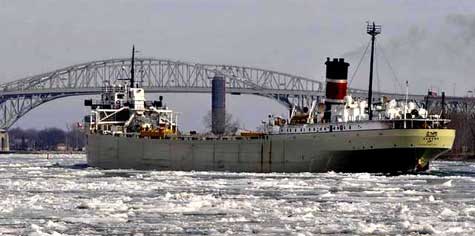
The wonderful thing about the US Great Lakes is that being fresh water, the ships on the lakes don’t rust like they do in the saltier oceans. Of course being fresh water, the lakes do freeze close enough to solid in the wintertime, so shipping comes to a halt. In recent weeks the ships have started moving on the St. Clair River . Earlier this week the St. Lawrence Seaway and the Welland Canal opened for business and today the Soo Locks between Lake Superior and the lower lakes are scheduled to ocean. The Great Lakes are a wonderful if sometimes confusing place. The water is fresh and there are no tides. The ships, even the 1,000′ bulk carrier,s too large to fit out of the locks, are referred to as “boats” and every travels in miles per hour.
Seaway Opens 53rd Season, 7% Increase Projected
Thanks to Phil Leon for passing the article along.

